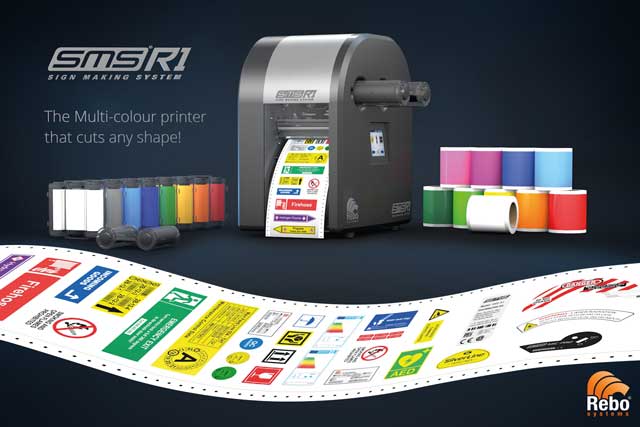 The increasing use of in-house sign and label printers to maximise the speed of sign and label creation, allowing faster notification of awareness of hazards, has changed the technology now on offer to the maintenance and process industry, says Clinton Church of Rebo Systems.
The increasing use of in-house sign and label printers to maximise the speed of sign and label creation, allowing faster notification of awareness of hazards, has changed the technology now on offer to the maintenance and process industry, says Clinton Church of Rebo Systems.
Over the last 40 years, there has been a steady evolution in creating technical signs and labels in-house, when needed. Previously, catalogues and printing services had been the main source of labels – but these sources never answered the question “how do we make a critical label now with a unique purpose and a specific reference?”.
Flexibility and change are important elements in maintenance and process labelling – adapting your labelling to real time hazards and ensuring a broader audience can understand the warnings and instructions is crucial in modern industry.
Durability, especially in industrial and mechanical situations, is vital – an important safety or technical label must not fall off or be damaged due to inclement weather or aggressive environments.
The traditional products have been a range of single colour, thermal transfer printers – that use resin ribbons to print onto vinyl and polyesters, coupled with a fit for purpose design software. The single colour ribbons could be changed, to give a variety of single colour on a coloured background, but multiple colours was always a challenge.
Technical labelling requires clear printing, graphical elements, colour varieties and the ability to endure oils, abrasion, cleaning and high temperatures.
Technical labelling has broadened to encompass pipe identification, machine and serial plates, equipment labelling, cable and wire marking, tagging, general notices, hazard warnings and, in many cases, multiple languages.
Plant and process marking is more than just safety signage. The labels and notices on machinery and equipment or cables and wires, including operating instructions, lock out programs, warnings and visual prompts, all need to be effective and current. They are also uniquely variable in shape, colour and the environment they need to endure while remaining legible and in place.
The latest developments in in-house systems, where the market demand still stands at a regular maximum of 4”or 10cm width, now incorporates both printing in multi-colour and the ability to cut any shape, or varied shapes, in one process.
Today the need for shapes and multiple colours in in-house label creation has increased, the key requirement being ease of use and speed. Keeping label creation at a level that can comfortably be mastered by all levels of staff requires a carefully tailored package.
The new R1, from Netherlands based Rebo Systems, is a result of this market evolution. It is a quiet, unobtrusive desktop product, coupled with a carefully selected design software and a large range of ribbon colours and substrates, that can print in multiple colours and cut out shapes in one process.
This combination means the one system can deliver small or large labels, produce mixes of different labels in one process, deliver repeats or one-off messages and produce technical labels that can withstand all the rigours of modern industry.
The key benefits are easy to measure: speed of production, cost control, flexibility, and durability. Beyond these process and cost advantages – the ability for non-graphically trained operatives to produce highly professional and effective labels and notices is also a major advantage.
Unique features of the R1 have been developed from the ground upwards. Rather than just taking a readily available printing product, Rebo Systems decided to design what they see as the perfect in-house industrial sign and labelling system available today.
Ribbon saving (this alone can save up to 50% wastage), network connection, enhanced speed (printing at 100mm/sec and cutting at 300mm/sec), ease of use and keeping the whole production contained within the unit (to stop contamination of the material and the print head – leading to failed printouts and waste) have all been key features on customers’ wish lists.
The requirement for ease of use inspired the creation of a unique and independent print driver, meaning customers have the option of using the supplied design software or they can continue to use the software they are already comfortable with to create their labels, signs and notices.
Another great advantage is the ability to easily update the picture library of the design software with new graphics, import diagrams and create links to databases and spreadsheets. The current software comes with over 2000 pre-installed graphical symbols.
Rebo Systems also has a library of pre-designed layouts, reflecting common layouts and designs, that can be easily downloaded and edited – making technical labelling creation even easier and more professional.
www.rebosystems.com
info@rebosystems.com

